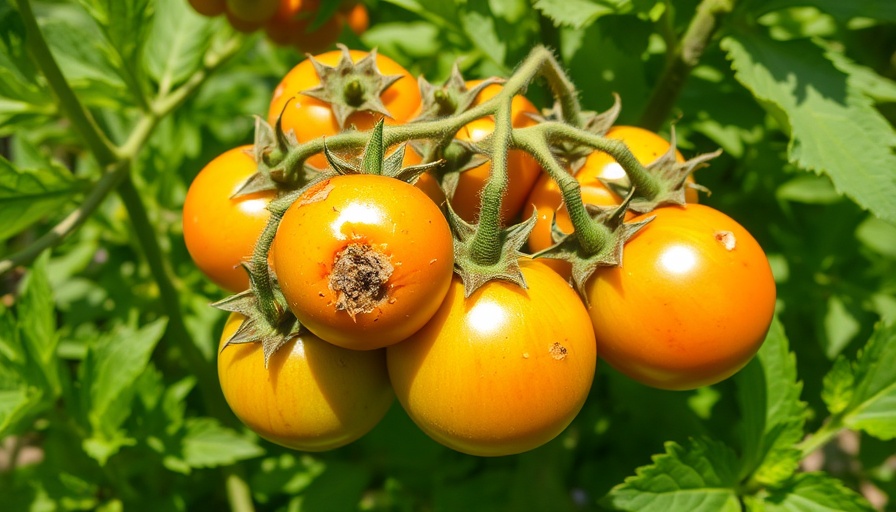
Understanding the Tomato Russet Mite: An Invisible Threat
As summer wanes and your tomato plants reach maturity, a hidden enemy may be lurking among the leaves: the tomato russet mite. This tiny arachnid is often unnoticed until substantial damage is done. These pests are less visible than typical garden nuisances like aphids or caterpillars, making them a stealthy adversary. In fact, identifying them often requires a closer inspection using a jeweler's loupe, as they can barely be seen by the naked eye.
Tomato russet mites thrive on the undersides of leaves, where they feed on the plant's juices. Their presence can lead to a variety of symptoms, including stippling on leaves, a bronzy appearance, and eventual death of the foliage. If left unchecked, these mites can decimate your harvest.
Why Knowledge is Key to Prevention
Understanding the lifecycle of tomato russet mites can give you the upper hand in protecting your garden. These pests reproduce rapidly in favorable conditions, and even small populations can blossom into large infestations. Learning how to implement effective prevention tactics will save your plants from extensive damage.
Maintaining a clean garden environment is one of the simplest yet most effective ways to prevent these mites. Regularly removing debris and trimming back heavily infested plants can significantly reduce the risk. Additionally, ensuring your tomatoes are healthy and well-nourished will bolster their defenses against these attackers.
Actionable Strategies for Late Summer Protection
As late summer approaches, your preparation must also evolve. Here are several practical insights for mitigating the risks of tomato russet mites:
- Monitor Regularly: Make it a habit to inspect your plants weekly. Look for the telltale signs of stippling on leaves, which can indicate an early infestation.
- Natural Predators: Introduce beneficial insects like ladybugs and predatory mites that feast on tomato russet mites. This creates a natural balance and helps to keep their population in check.
- Proper Irrigation: Ensure you’re watering plants properly; both over and under-watering can stress plants and make them more susceptible to pest infestations.
- Insecticidal Soaps: If an infestation is detected, consider using insecticidal soaps or horticultural oils that can help eliminate these pests without harming the plant.
Empowering Your Garden for Success
Finally, successful gardening is not just about tackling problems as they arise; it’s about empowering yourself with knowledge and tools. A well-planned garden can naturally deter pests. For example, constructing raised beds not only elevates your plants but creates better air circulation and can keep soil-borne pests at bay. Exploring the idea to build a storage combo can also free up space in your garden for essential tools and provide a convenient location for monitoring plant health.
As you prepare to enjoy your harvest, remember that early detection and adaptation are pivotal in pest management. By incorporating effective preventative measures and learning from past experiences, you are not just gardening—you are cultivating a flourishing ecosystem.
Call to Action: Ongoing Support for Your Lawn and Garden
Your gardening journey doesn’t have to be a solitary one! Reach out to Norther-LawnCare.com for top-notch assistance. From lawn care and winter plowing to property management, Everett Lucas and his team are dedicated to helping you maintain your outdoor spaces, ensuring they remain healthy year-round. Don’t hesitate to call 231-450-3414 for a five-star service experience!
 Add Row
Add Row 
 Add
Add 


Write A Comment